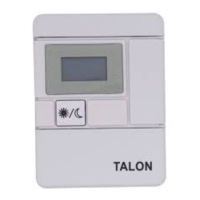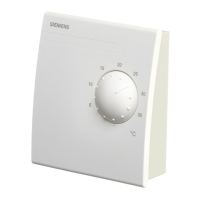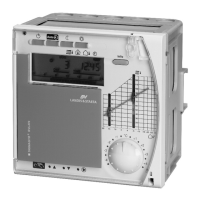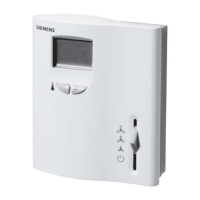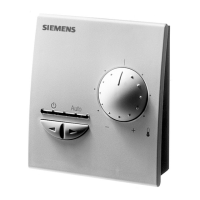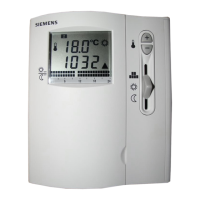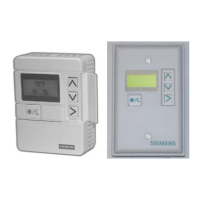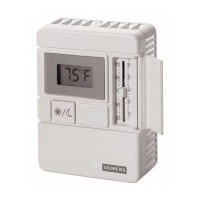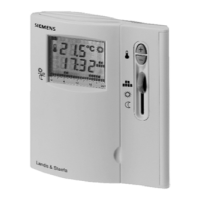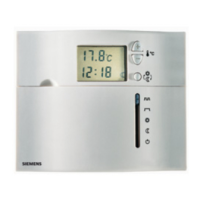10 TECHNICAL DATA
INPUTS
SURVEY OF THE INPUTS
Input Used for:
INP1 x (process value)
INP2 Heating current, ext. set-point
di1 Operation disabled, switch-over to
second setpoint SP.2, external
setpoint SP.E, fixed output value Y2,
manual operation, controller off,
disabling of manual key, reset of
stored alarms, boost, parameters 1/2,
safety temperature limiter, start/stop
with local operation, sensor operating
mode, level alarm, flow alarm
di2
di3
PROCESS VALUE INPUT INP1
Resolution: > 14 Bit
Decimal point: 0 to 3 decimals
Limiting frequency: adjustable 0.000...9999 s
Scanning cycle: 100 ms
Measured value
correction:
2-point or offset correction
Thermocouples
Input impedance: 1 M
Effect of source resistance:
1 V/
Cold junction compensation
Max. additional error
0.5 K
Sensor break monitoring
Sensor current: 1
A
Operating sense configurable
Resistance thermometer
Connection: 3-wire
Lead resistance: max. 30 Ohm
Input circuit monitor: Break and short circuit
Resistance measuring range
The BlueControl software can be used to
match the input to the sensor KTY 11-6
(characteristic is stored in the controller).
Physical measuring range: 0...4500 Ohm
Linearization segments: 16
Current and voltage signals
r Table 3 (page 24 )
Span start, end of span: anywhere within measuring
range
Scaling: selectable -1999...9999
Linearization: 16 segments, adaptable
with BlueControl
TECHNICAL DATA
Operating note KS 50-1 TCont 23 Slave telegram
Thermocouple Range Accuracy Resolution (Ô)
L Fe-CuNi (DIN) -100...900°C -148...1652°F ß 2K 0.1 K
J Fe-CuNi -100...1200°C -148...2192°F ß 2K 0.1 K
K NiCr-Ni -100...1350°C -148...2462°F ß 2K 0.2 K
N Nicrosil/Nisil -100...1300°C -148...2372°F ß 2K 0.2 K
S PtRh-Pt 10% 0...1760°C 32...3200°F ß 2K 0.2 K
R PtRh-Pt 13% 0...1760°C 32...3200°F ß 2K 0.2 K
special -25 … 75 mV
0.1% 0.01%
Table 1 Thermocouple ranges
Type Sensor current Range Accuracy Resolution (Ô)
Pt100 0,2mA -200...850°C -328...1562°F ß 1K 0.1K
Pt1000 -200...850°C -328...1562°F ß 2K 0.1K
Resistance
4500
ß 0.1% 0.051%
Table 2 Resistance transducers

